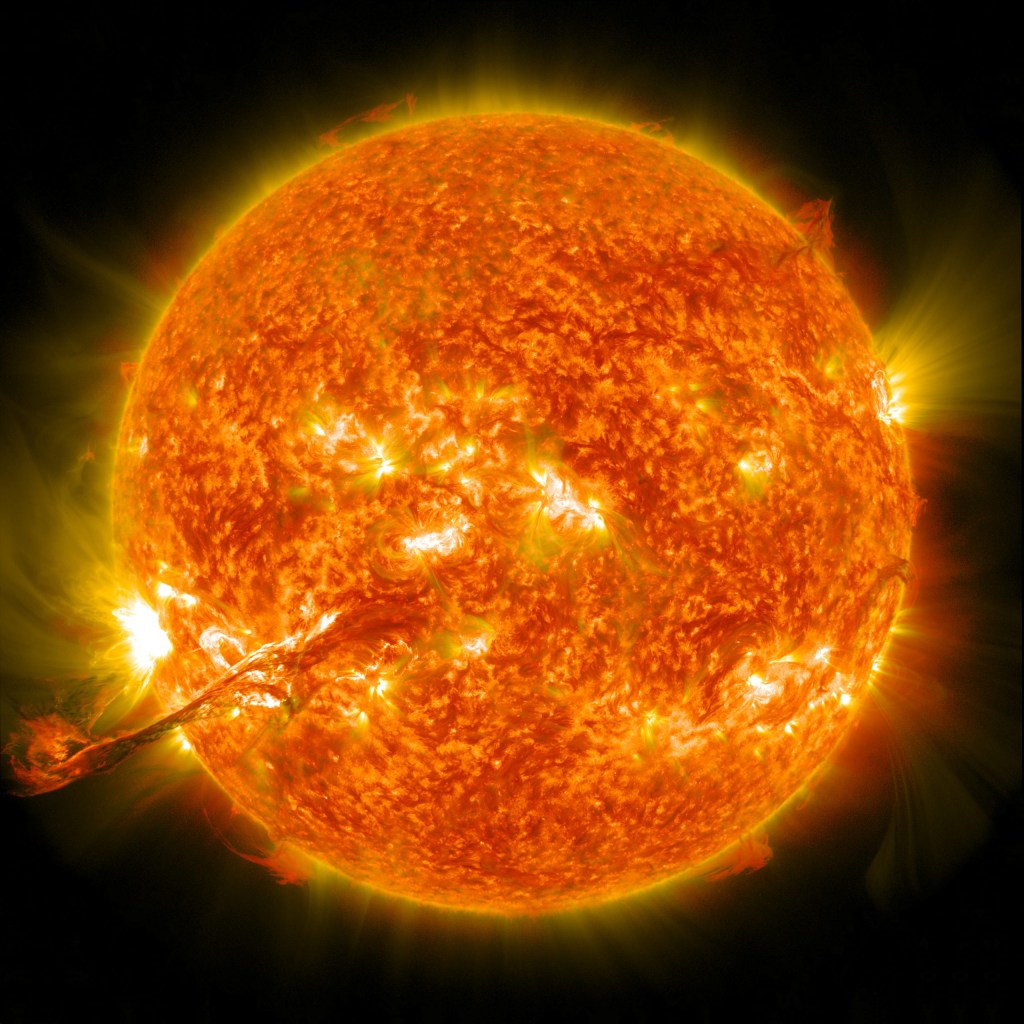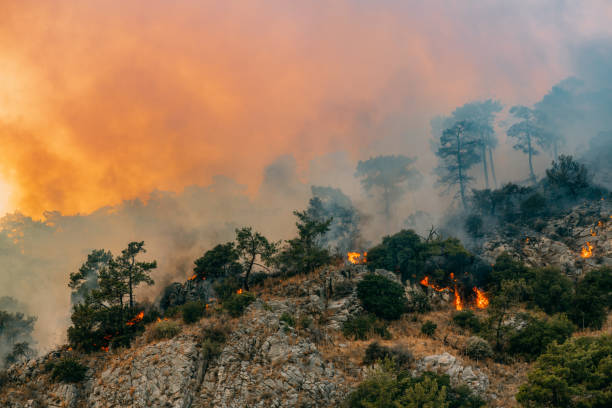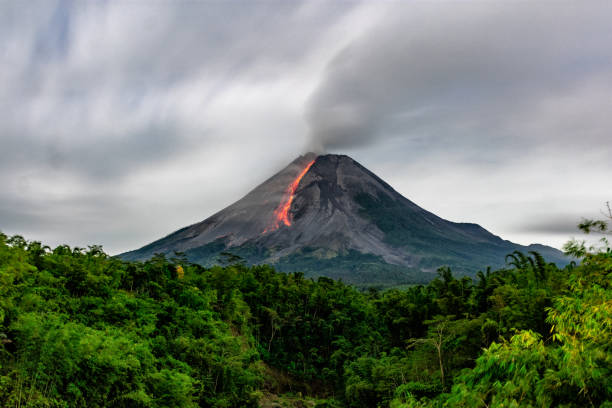High above the serenity of a blue sky, far beyond the drifting clouds and the gentle winds, there exists a realm of unimaginable violence. It is not a place that most people ever think about—let alone fear—but every so often, this invisible world roars to life, sending shockwaves across the solar system. At the heart of this fury is our Sun, the massive, life-giving star we so often take for granted. And when it erupts in a solar flare, the consequences ripple all the way down to our oceans, our power grids, and even our smartphones.
Solar flares are explosions on the Sun’s surface that release an incredible amount of energy. For a few chaotic minutes, a flare can outshine the entire rest of the Sun in X-ray and ultraviolet light. To understand their impact, we must first journey into the Sun’s atmosphere—where magnetic chaos brews and where invisible threads of plasma can snap, unleashing fury across the vast gulf of space. These titanic bursts of radiation may be born millions of miles away, but when they collide with Earth’s magnetic field, they can ignite storms of a very different kind—ones made not of thunder and rain, but of radiation, plasma, and electromagnetic fury.
This is the story of how solar flares affect Earth—not just its weather, but the technology we rely on every second of every day. It’s a story that begins with a star and ends with us, in the illuminated glow of our screens, completely unaware that above our heads, the sky might be silently burning.
The Nature of Solar Flares: Eruptions of Magnetic Mayhem
The Sun is not a tranquil object. It is a nuclear furnace constantly boiling with turbulent plasma—hot, electrically charged gases. Within this seething chaos, the Sun’s magnetic field twists and tangles like a tightly wound ball of rubber bands. Over time, magnetic field lines can become so stressed and contorted that they suddenly snap and reconfigure, releasing enormous amounts of energy in the form of light and high-energy particles. This explosive event is what we call a solar flare.
Solar flares are categorized by their intensity. Scientists use a letter-based scale: A, B, C, M, and X. Each letter represents a tenfold increase in energy output, with X-class flares being the most powerful. Within each class, a number from 1 to 9 further refines the measurement. An X9 flare, for example, is nearly 1000 times more powerful than an M1 flare.
The most powerful flares are often associated with coronal mass ejections (CMEs)—massive bubbles of plasma and magnetic fields hurled into space. Not all solar flares produce CMEs, but when they do, the consequences can be far more dramatic. The CME acts like a cannonball, carrying with it charged particles that can interact with Earth’s magnetosphere. This is when space weather becomes a terrestrial concern.
From Light to Earth: The Speed of Solar Consequences
When a solar flare erupts, it sends high-energy photons—primarily X-rays and ultraviolet light—racing toward Earth at the speed of light. This means we feel the effects in just over eight minutes. These photons can disturb the ionosphere, the electrically charged layer of Earth’s upper atmosphere that is crucial for radio communication. The disturbances can block high-frequency (HF) radio waves, effectively cutting off communication over large areas.
But the more dangerous aspect arrives hours or days later, depending on the velocity of the CME. These slower-moving clouds of plasma can smash into Earth’s magnetic field, compressing it and generating geomagnetic storms. It’s like throwing a rock into a pond and watching the ripples spread outward—except the ripples here are electric currents, sweeping across the globe.
The strength of these geomagnetic storms can vary. Small storms cause minor fluctuations in the magnetic field, barely noticeable to anyone outside of an observatory. But powerful storms can disrupt navigation systems, overload power grids, and even damage satellites orbiting thousands of miles above Earth.
The Aurora: Earth’s Dazzling Warning Sign
There is beauty in the chaos, and the aurora is its most captivating manifestation. When charged particles from a CME strike Earth’s magnetosphere, they funnel toward the poles along magnetic field lines. There, they collide with atoms in the upper atmosphere—primarily oxygen and nitrogen—causing them to glow. The result is the aurora borealis in the north and aurora australis in the south: shimmering curtains of green, red, and purple light that dance across the sky.
While awe-inspiring, strong auroras often signal that a geomagnetic storm is underway. For centuries, indigenous cultures and early explorers marveled at these lights without understanding their cause. Today, we know they are a visual representation of the electromagnetic battles taking place far above our heads. The stronger the storm, the farther from the poles the auroras can be seen. In extreme cases, the aurora has been visible as far south as the Caribbean and India.
The Carrington Event: A Solar Wake-Up Call
To understand the real potential of solar flares, we must revisit an extraordinary moment in history: the Carrington Event of 1859. On September 1st of that year, British astronomer Richard Carrington was observing the Sun through a telescope when he witnessed a sudden flash—a massive solar flare. Within hours, Earth was engulfed in the most intense geomagnetic storm ever recorded.
Telegraph systems across Europe and North America failed spectacularly. Sparks leaped from telegraph machines, some bursting into flames. Operators received electric shocks. In some places, telegraph systems continued to send messages even after being disconnected from power sources, driven by the electrical energy surging through the Earth.
The aurora was visible near the equator, in places where no one had ever seen the phenomenon. The skies of Cuba and Hawaii glowed blood red. Newspapers reported frightened citizens believing the world was ending.
This storm occurred before the modern age of electricity, before the digital infrastructure that now connects and sustains civilization. If a Carrington-class event were to happen today, the damage could be catastrophic.
Modern Impacts: When the Sun Disrupts Our Lives
Today, our dependence on technology makes us far more vulnerable to solar flares. A strong geomagnetic storm can affect nearly every layer of modern infrastructure.
Power grids are particularly susceptible. Long-distance electrical transmission lines act like giant antennas, picking up the induced currents generated by geomagnetic storms. Transformers can be damaged or destroyed, leading to large-scale blackouts. In 1989, a solar storm knocked out power to six million people in Quebec, Canada. It took only 90 seconds from the moment the solar particles arrived for the entire grid to fail.
Satellites orbiting Earth are at risk too. Charged particles can interfere with their electronics, degrade solar panels, and even cause complete system failures. In 2003, during the so-called Halloween Storms, more than a dozen satellites suffered malfunctions. Astronauts aboard the International Space Station had to take shelter in shielded areas.
Air travel is not immune either. On polar routes, where the Earth’s magnetic field offers the least protection, radiation levels can spike during solar storms. Airlines may reroute flights, increasing costs and delays. Radio blackouts in the polar regions can make communication with pilots impossible for hours at a time.
Even GPS systems, which require extremely precise timing and signal integrity, can be thrown off by ionospheric disturbances caused by solar flares. The effect can range from annoying to dangerous, particularly in situations like aviation, shipping, or military operations where accuracy is critical.
Can Solar Flares Affect Earth’s Weather?
One of the more tantalizing questions in space science is whether solar flares and geomagnetic storms can influence terrestrial weather. It’s easy to imagine a connection: the Sun heats the Earth, so when it erupts, shouldn’t our atmosphere respond?
The short answer is yes—but not in the way we might think. Solar flares primarily affect the upper layers of the atmosphere, like the ionosphere and thermosphere, not the lower atmosphere where weather occurs. However, the story doesn’t end there.
Some studies suggest that solar activity, including flares and sunspots, may have subtle effects on long-term climate patterns. Changes in solar ultraviolet radiation can influence stratospheric winds and ozone concentrations, which in turn may trickle down to affect weather patterns.
Still, the evidence is complex and debated. Unlike the clear, direct impacts solar flares have on technology, their influence on weather is indirect and often masked by larger forces like greenhouse gases, ocean currents, and volcanic activity. Nevertheless, it’s an area of ongoing research, as scientists attempt to unravel the delicate threads that tie space weather to Earth’s climate engine.
Forecasting the Sun: A Race Against Time
In recent years, solar science has made great strides. Observatories like NASA’s Solar Dynamics Observatory (SDO), the Solar and Heliospheric Observatory (SOHO), and the Parker Solar Probe are giving us unprecedented views of the Sun’s behavior. These missions allow scientists to monitor solar activity in real-time and predict when a flare might impact Earth.
Yet forecasting solar flares remains incredibly difficult. Unlike hurricanes or earthquakes, we cannot yet predict exactly when or where a solar flare will occur. We can observe sunspots—regions of intense magnetic activity—and estimate their potential for flaring, but much of the timing remains elusive.
What we can do is issue alerts once a flare has occurred, especially if it is Earth-directed. Space weather forecasting centers around the world, including NOAA’s Space Weather Prediction Center and ESA’s Space Weather Coordination Centre, constantly monitor solar activity and provide warnings to power companies, airlines, satellite operators, and governments.
Every minute counts in these scenarios. With as little as 15 to 60 minutes of notice, operators can protect sensitive equipment, reroute flights, or place satellites in safe modes.
Living with a Magnetic Star
Our relationship with the Sun is both beautiful and dangerous. It gives us light, warmth, and life—but it also carries the seeds of disruption. Solar flares remind us that Earth is not an isolated island, but part of a cosmic ecosystem in which invisible storms can cross millions of miles to rattle our most treasured technologies.
We cannot stop solar flares. We cannot control the Sun. But we can prepare. Through better forecasting, improved infrastructure, and increased public awareness, we can build resilience against the solar tantrums that will inevitably come.
Understanding solar flares is not just about science—it’s about survival. It’s about learning to live on a planet bathed in radiation from a volatile star. It’s about realizing that in the vastness of space, our technologies and systems are fragile threads—threads that can be singed or severed by a solar wind from across the void.
A Glimpse at Tomorrow
As our reliance on space-based technology deepens—with mega-constellations of satellites, autonomous vehicles, and global internet—our vulnerability to solar flares only grows. The next Carrington-class event is not a question of if, but when. And when it does come, it will test the resilience of our civilization.
But it will also showcase the triumph of human ingenuity. Just as we’ve learned to predict hurricanes and construct earthquake-resistant buildings, we are learning to read the language of the Sun. We are listening to its flares and mapping its winds, preparing for the day when space weather becomes front-page news.
In the end, solar flares are reminders of a deeper truth: that even in our high-tech world, we remain children of the stars, bound by cosmic forces we are only beginning to understand.






